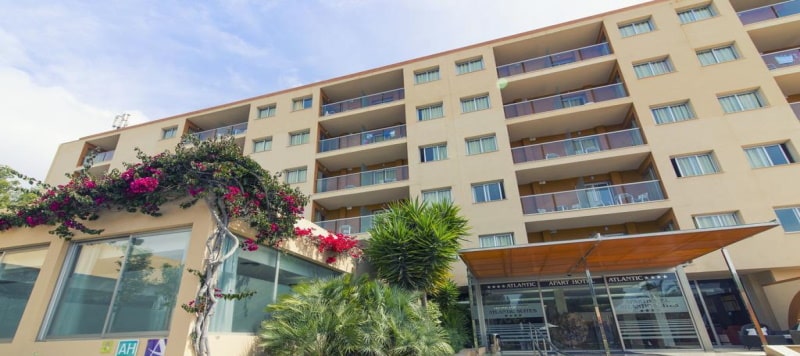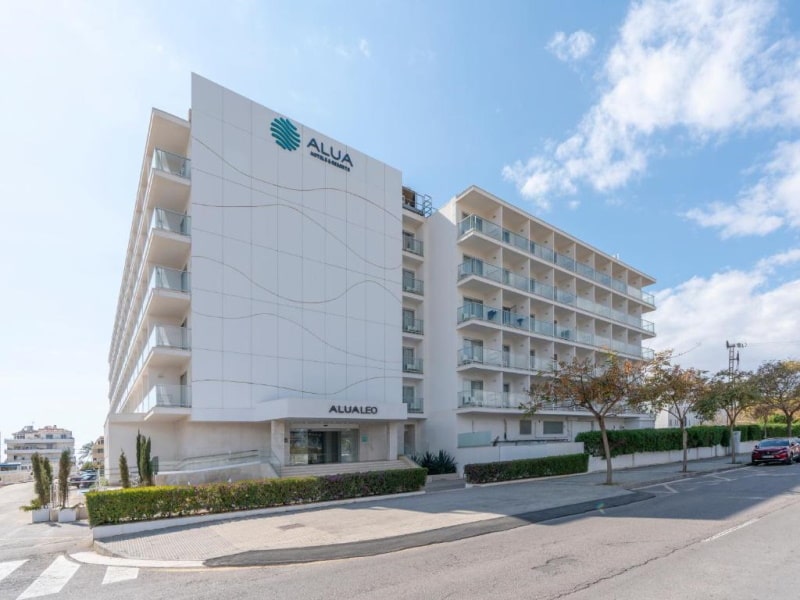
You can search for holidays
Balearic Islands Holidays
Situated east off of Spain’s mainland, the Balearic Islands are gorgeous Mediterranean islands offering a slice of tropical paradise close to home, around a 2-3hr flight from the UK. Mallorca is the largest of the Balearic Islands and the ultimate sun, sand, and sea holiday hotspot, offering diverse landscapes of pristine coastlines and towering mountains, plus city break appeal at its capital, Palma de Mallorca. Menorca, Mallorca’s neighbour is smaller and more laid-back, offering unspoilt beaches, impressive historic architecture, pretty harbours, water sports, and scenic hiking trails.
The stunning island of Ibiza offers something for all types of traveller; partygoers can look forward to wild nights out at world-class entertainment venues, but there’s so much more to the island, like countryside settings, blissful beaches, and tranquil retreats. From Ibiza harbour you can catch a ferry to Formentera, the smallest island of the Balearics.
Map of Balearic Islands

azuLine Hotel Atlantic
Carrer s'Aljub, s/n, 07849 es Canar, Illes Balears, Spain

Alua Leo
Carrer de Manuela de los Herreros, 12, Platja de Palma, 07610 Can Pastilla, Illes Balears, Spain

Seth Port Ciutadella
Passeig Marítim, 36, 07760 Ciutadella de Menorca, Illes Balears, Spain

Club Ciudadela
Calle del Tenis, Urb. Son Xoriguer s/n, Son Xoriguer, Spain

Globales Verdemar Apartments
Carrer de Ramon de Montcada, 14, 07180 Santa Ponça, Illes Balears, Spain
Local Information & Travel Tips
The Balearic Islands, an archipelago in the Mediterranean Sea, are part of Spain and include the four main islands of Mallorca, Menorca, Ibiza, and Formentera. Here's a guide to help you explore them:
General Travel Information
Language
Spanish is the official language, but Catalan is also widely spoken, with each island having its own dialect. English and German are commonly spoken in tourist areas.
Currency
Euro (€) is the official currency. Credit cards are widely accepted, but it's good to carry some cash for small purchases, especially in rural areas.
Transportation
Ferries connect the islands with each other and the mainland. Book in advance during peak season. Regular flights operate between the islands and from major European cities. Car rental is highly recommended for exploring the islands at your own pace. Roads are generally well-maintained but watch out for narrow and winding paths in rural areas.
Accommodation
Options range from luxury resorts to budget hostels and rural guesthouses. Booking in advance is essential during peak season.
Things to Do and See in the Balearic Islands
Top Attractions in Palma de Mallorca (Majorca)
La Seu (Palma Cathedral): this stunning Gothic cathedral is one of Mallorca's most iconic landmarks, known for its towering presence overlooking the Mediterranean Sea.
Palma’s Old Town: a maze of narrow, winding streets filled with historic buildings, churches, charming squares, and hidden gems like boutique shops, cafes, and the ancient Arab Baths (Banys Àrabs).
Bellver Castle: perched on a hill overlooking Palma, Bellver Castle is one of the few circular castles in Europe. The Gothic-style castle houses a museum dedicated to the history of Palma, and its rooftop provides panoramic views.
Serra de Tramuntana: this UNESCO World Heritage Site is a stunning mountain range that runs along the northwest coast of Mallorca, offering numerous hiking and cycling trails with breathtaking vistas.
Cuevas del Drach (Dragon Caves): a series of stunning limestone caves that extend for about 1,200 meters and include one of the largest underground lakes in the world, Lake Martel.
Alcudia Old Town: a beautifully preserved medieval walled town with narrow streets, historic buildings, and a lively market. The town’s Roman ruins, including the remains of the ancient city of Pollentia, are a highlight.
Sóller: a charming town nestled in a fertile valley surrounded by orange groves and mountains. The historic Sóller Railway is a vintage wooden train that has been running between Palma and Sóller since 1912, offers a scenic ride through the mountains.
Es Trenc Beach: one of the most famous beaches in Mallorca, known for its long stretch of soft white sand and crystal-clear turquoise waters.
Cala Llombard: a beautiful, secluded beach located on the southeastern coast of Mallorca, offering a serene escape with clear turqouise waters and fine golden sands, surrounded by rocky cliffs.
Top Attractions in Ibiza
Ibiza Town: explore this UNESCO World Heritage Site with its ancient walls, cobblestone streets, and medieval architecture. Ibiza Cathedral is located at the highest point of the old town, offering panoramic views of the island.
Es Vedrà: a striking, uninhabited island off the southwestern coast, known for its dramatic appearance and mystical reputation.
Cala Comte (Cala Conta): a stunning beach famous for its crystal-clear turquoise waters and beautiful sunsets. It’s an ideal spot for swimming and sunbathing.
San Antonio Sunset Strip: this famous strip offers incredible sunset views, with iconic bars like Café del Mar and Café Mambo offering a perfect setting to watch the sun go down.
Torre del Pirata: a historical watchtower offering panoramic views of the surrounding coastline and Es Vedrà. It’s a great spot for photography and hiking.
Santa Eulalia del Río: this charming town is known for its relaxed atmosphere, pleasant promenade, and good selection of shops and restaurants. Visit the Las Dalias Hippie Market in nearby San Carlos for unique crafts, clothing, and souvenirs.
San Juan Bautista: experience the island’s traditional side through the charming streets, local shops, and historical sites of San Juan Bautista.
Ibiza's Natural Parks: Parc Natural de Ses Salines is a protected area known for its salt flats, birdwatching opportunities, and unique ecosystems. Parc Natural de la Península de l'Àguila is a natural park with scenic hiking trails, beautiful landscapes, and diverse flora and fauna.
Es Canar Hippy Market: one of Ibiza’s famous hippy markets, held every Wednesday, offering a range of handmade crafts, clothing, and souvenirs in a colorful setting.
Top Attractions in Menorca
Mahon (Maó): home to Mahon Harbour, one of the largest natural harbours in the world, plus the Mahon Town Hall, a historic building with a striking façade, and the Museu de Menorca that offers exhibits on the island’s history, archaeology, and culture.
Ciutadella: explore the narrow, winding streets, charming squares, and historic buildings of this port city, including the Cathedral of Menorca. Stroll along the marina and enjoy the views of the yachts and the picturesque waterfront.
Cala Galdana: this gorgeous beach is known for its crescent-shaped bay with white sand and clear blue waters. Cala Galdana is perfect for swimming, sunbathing, kayaking, and family-friendly activities.
Fornells: a picturesque fishing village with a pleasant harbour, seafood restaurants, and local shops. Enjoy sailing, kayaking, or stand-up paddleboarding in the calm waters of Fornells Bay.
Monte Toro: the island’s highest peak offering panoramic views of Menorca and its surrounding areas. Visit the sanctuary at the top and enjoy the serene environment.
Naveta des Tudons: this ancient burial chamber, one of the most significant archaeological sites on the island, dates back to the Bronze Age. The structure is a fascinating example of Menorcan prehistory.
Binibeca Vell: a picturesque village known for its whitewashed houses, narrow streets, and serene atmosphere. It’s a great place for a leisurely stroll and to experience traditional Menorcan architecture.
Es Grau: part of the Albufera des Grau Natural Park, this area offers beautiful natural scenery, birdwatching opportunities, and a serene beach ideal for relaxation.
Cap de Favàritx: visit this remote lighthouse located on a rugged coastline, offering dramatic sea views and a rugged, natural landscape.
Cala Turqueta: one of Menorca’s most beautiful and sought-after beaches, surrounded by rocky cliffs and pine forests, and home to clear waters perfect for swimming and snorkelling. Cala Turqueta is part of the natural landscape conservation areas of Menorca, so it’s important to respect the environment and follow local guidelines to preserve its natural beauty.
Weather in the Balearic Islands
The Balearic Islands, including Mallorca, Menorca, Ibiza, and Formentera, enjoy a Mediterranean climate with warm, dry summers and mild, wetter winters.
Spring (March - May)
Spring is a pleasant time to visit, with gradually warming temperatures and blooming landscapes. Rainfall is moderate, with occasional showers. The sea starts warming up but can still be a bit cool for swimming.
Summer (June - August)
Summer is hot and dry, with very little rainfall. It’s the peak tourist season, with long, sunny days and warm, inviting sea temperatures perfect for beach activities.
Autumn (September - November)
Autumn is a great time to visit the Balearic Islands, with pleasant temperatures and less crowded attractions. Rainfall increases, especially in October and November. The sea remains warm in September and gradually cools down by November.
Winter (December - February)
Winter is mild but wetter, with the highest chance of rain and occasional storms. Snow is rare but possible in the higher elevations of Mallorca. The sea is cooler, and might be too cold for swimming for some people.
Looking for other holidays?
Copyright ©2025 Brightsun Travel. All rights reserved.

